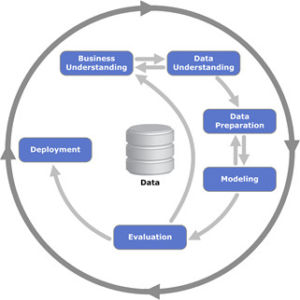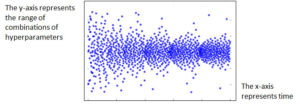Challenges of AI-projects
The purpose of this article is two-fold, first to help organisations better understand the challenges of starting AI-projects and second how to systematically approach them. The intended target audience are C-level executives and managers who are considering to invest in AI-solutions for their business.
Written by: Magnus Magnusson, Webstep
Introduction
During the last year we at Webstep have worked on developing a system and a process to facilitate the start-up of machine learning projects. We loosely follow the CRISP-DM (Cross Industry Standard Process for Data Mining) methodology: starting with business understanding, assessing the AI-readiness within the organisation, identifying promising areas for AI and finally finishing with deployment or evaluation depending on the project goal.

Process application
In this article we describe an example of how we applied the methods and system in a project for an organization that works with forecasts. They requested an AI solution capable of automatically creating forecasts to replace their existing manual way of working.
We started out trying to answer three questions related to business understanding, data understanding and modelling:
- How to select the most promising use case?
- Are there any patterns in the information / statistics that can be used?
- Which machine learning models are suitable for this use case?
Selecting the use case
To be able to choose which use case to start with, we had to consider several factors:
- ROI, ie classical financial calculation, if our client selects this use case what will be the cost and when will they get return on their investment?
- Is there any data available?
- Does the company have staff available with domain knowledge and access to the information / data?
Finding the optimal solution
Once we had access to their data our proprietary system was set to work on it. The system is built to evaluate whether the customer’s data contains enough patterns to be able to solve the task. In this case predicting the number of started housing projects in Sweden 12 months ahead. It is based on open source software and is developed in Python. Depending on the amount of data, it can take anywhere from a few hours to days before the system has found an optimal combination of features and models, see figure below.
The result for the customer was a report on the best combinations of parameters, statistical methods and machine learning models with the highest accuracy and lowest error metric.

Comparing and evaluating the suggested solutions
The final step was to evaluate whether the accuracy of the system report was sufficient to achieve the desired financial gain. In this customer’s case, we compared with their existing solution for forecasts and our solution created the same forecast which had taken them days to build manually in a matter of hours.
The conclusion is that using our automated approach was considered a success and quickly paid itself.
————————–
Comments from Webstep colleague Harriet Wright:
AI is a tool, just like a hammer. A hammer doesn’t build a house by itself, but we can use the hammer to build a house. The same goes for AI – with the use of data. Often we see that many customers want to start an AI-project, but they haven’t considered if they have enough feasible data, business case and ROI, overpromising what the AI actually will be able to do to the rest of the organization and lastly anchoring within the whole organization from top to bottom. This is what we call how AI-ready you are. By following the process that Magnus describes, we deliver everything from data preparation, machine learning specialists and model deployment in order for the customer to start to exploring and extracting the benefits of using machine learning to increase business value.
Who we are: Webstep — specialists in AI/Machine Learning and Software Engineering
Webstep has approximately 400 employees covering Norway and Sweden. We have spent the last years establishing our Center of Excellence in Data science jointly based over several offices in both Norway and Sweden. Our track record of delivering senior consultants to the most demanding customers in Sweden and Norway, combined with the competency and capacity available in the data science Center of Excellence puts us in a unique position as a partner for clients exploring the business value that data science/machine learning can provide.
If you are considering whether or not to invest in AI-solutions contact us for a first AI readiness evaluation.
